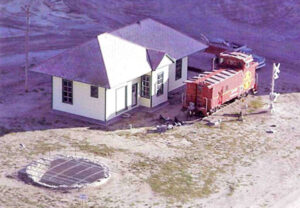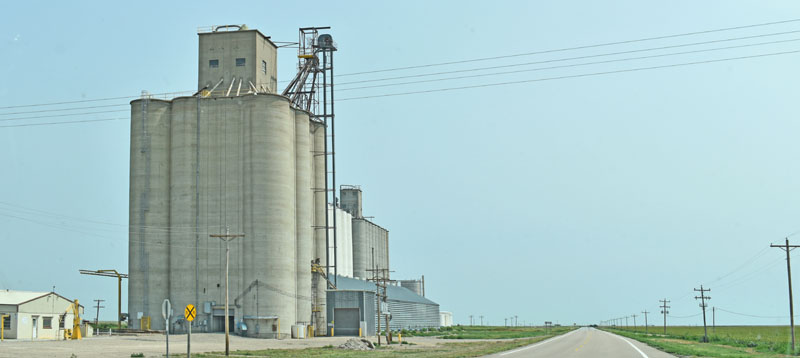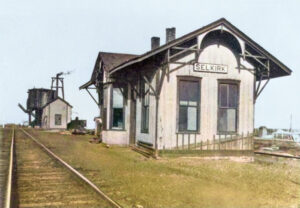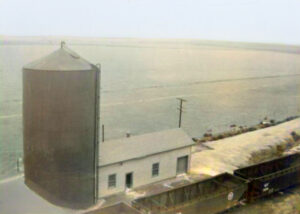Located between Leoti and Tribune, Kansas, Selkirk is an unincorporated community in Wichita County and an extinct town, as it no longer has a post office.
Established in Leoti Township, Selkirk was a busy shipping point in its early years.
On September 15, 1887, the tracks of the Chicago, Kansas & Western Railroad were completed to the community, and the first regular train ran through on January 1, 1888. There was a large freight yard; the capacity at this point was not exceeded by any station on the line between Selkirk and Rush Center. It had a switch room for 12 cars more than at any point on the line.
The Atchison, Topeka & Santa Fe Railroad was close behind. In 1887, the railroad constructed the “Great Bend Extension” to Selkirk. It was intended to be part of the Santa Fe line on its route to Denver, Colorado; however, the line was never completed and terminated in Selkirk. Part of this project was building the second-deepest hand-dug well in Kansas, measuring 102 feet in depth and 24 feet in diameter. It took 46 train carloads of stone, nine carloads of lumber for the curbing, and five carloads of cement. A total of 48,000 cubic feet of dirt was removed from the well. This dirt was hauled on the train cars back to Ness City to be stockpiled there. It was used for laying the railroad beds, etc. After the well was completed, the pump was installed in a pump house above ground, which transferred the water into the large tank tower for use as needed.
The water from this hand-dug well had many uses. It was used to supply steam for the engines, as well as to supply water for the stationary boilers, wash train cars and floors, clean out the boilers, cool ashes, provide fire protection, and serve many similar purposes at the shops, engine house, and station buildings. The citizens of the town of Selkirk were also furnished with water at the cost only of the fuel necessary to run the apparatus.
The Selkirk Graphic newspaper of the late 1800s provided many details about the events surrounding the railroad. The Atchison, Topeka & Santa Fe Railroad had built a large depot with a ticket office, a telegraph office, an ample waiting room, a freight house, machine shops, seven acres of stockyards with double-loading chutes, a large wooden water tower, a pump house, and a hand-dug well.
In 1896, a Missouri Pacific Railroad passenger train that ran parallel to the Santa Fe line between Scott City and Selkirk, wrecked near Selkirk when the eastbound passenger train #202 derailed due to washed-out tracks. One death resulted from the accident.
Afterward, the Santa Fe line was abandoned, and in 1898, the Santa Fe line tracks were removed, thus ending the need for the well.
A post office was established in Selkirk on February 19, 1887.
Selkirk’s post office closed on November 15, 1906; however, it reopened almost a year later on August 1, 1907. Once again, the post office closed on October 15, 1908, but reopened on October 9, 1909.
In 1910, Selkirk had a post office, a telegraph office, and a population of 42.
The community’s post office closed for the last time on August 9, 1980.
Today, this small agricultural place still has several grain elevators, silos, a Co-op, and various storage buildings. The site also features the 130+ year-old Selkirk Well, a remarkable example of railroad architecture. Also located at the site is a railroad depot and a Santa Fe Railroad caboose.
Selkirk is located about ten miles west of Leoti, Kansas.
©Kathy Alexander/Legends of Kansas, October 2025.

Old well in Selkirk, Kansas, courtesy of Kansas Historic Resources Inventory.
Also See:
Extinct Towns of Wichita County
Sources:
Blackmar, Frank W.; Kansas: A Cyclopedia of State History, Vol I; Standard Publishing Company, Chicago, IL 1912.
Kansas Historic Resources Inventory
Kansas Post Office History
Wikipedia



